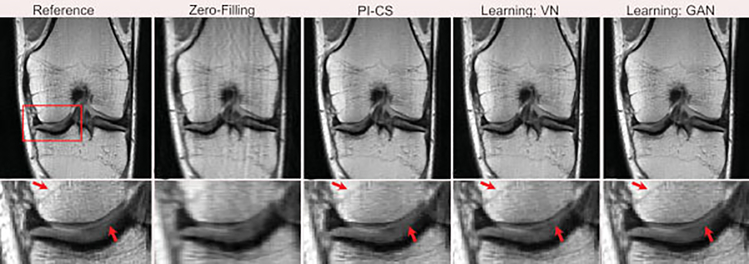Fig. 6.
Representative examples of knee images (coronal proton-density-weighted) obtained using the different reconstruction methods at acceleration rate R = 3. Compared with the traditional method with a combination of parallel imaging and compressed sensing (PI-CS) and the variational network (VN), the data-consistent generative adversarial network (GAN) provided better removal of aliasing artifacts in the bone and cartilage, and greater preservation of the sharp texture and tissue details, thus creating high-quality reconstructed images. The arrows indicate regions where tissue details are especially well preserved in the learned reconstructions.

